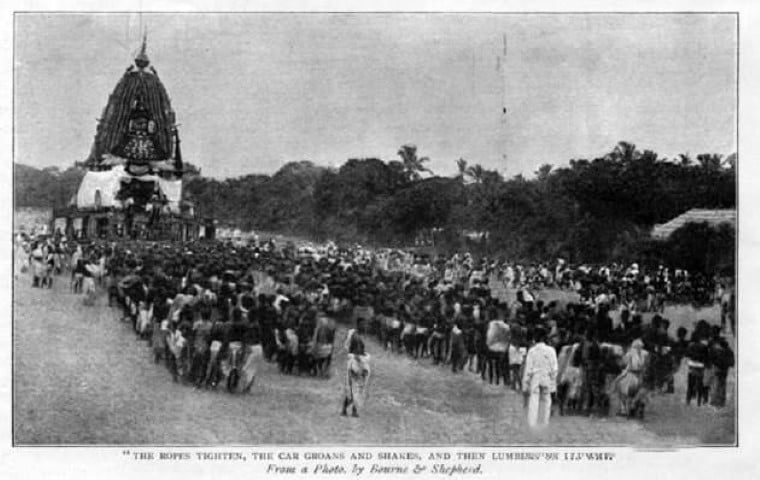India bore the brunt of the pandemics in the late 19th and early 20th centuries, the plague pandemic and the Spanish Flu, which arrived on ships to Mumbai and spread across the country like wildfire. But the classic pandemic of the 19th century was Cholera. There were 5 major pandemics only in the 19th century starting from 1817, and this is a pandemic that spread from India to the rest of the world. Normally, pandemics have spread westwards, from China to the West. This moved both westwards and eastwards. It moved to China as well.
Although Cholera existed in India earlier, this was probably a new strain, which made it so virulent. The 1817 pandemic started in Jessore in present-day Bangladesh and spread everywhere. It struck a tenth of the population of British India and about 6% of the population died. The Europeans feared it as the return of the Black Death.

Cholera represented all that was wrong with India for the British. As cholera was a contagious waterborne disease, the Hindu pilgrimage and the huge congregations in pilgrimage centres like Puri and Varanasi, the events of Rath Yatra and Kumbh Melas were seen as super-spreaders of cholera. The holy tanks were pilgrims immersed were seen as the waters of death.
Also Read: Pandemics In History 2: Rats And The Plague
Also Read: Pandemics In History 3: From Rats To Bats
Since the British were based out of Kolkata, not surprisingly, they saw Puri as the chief seat of the Hindu religion. The colonial government and Christian missionaries, therefore, also saw Puri as iconic of the disease and decay they associated with Hinduism. It was seen as the land of the ‘Juggernaut’, which in English refers to something large that crushes everything that comes under it referring to the Rath Yatra. Sir William Hunter, British Civil Servant and historian, who wrote one of the first modern histories of Odisha, called it the “homicidal enterprise” and a “yearly sacrifice”, which left about 10,000 pilgrims getting killed under the wheels in the Rath Yatra. A missionary wrote in 1828, “Probably no spot on earth represents, within so small a compass, such complicated scenes of misery, cruelty, and vice, as are presented to view around the temple of Juggernaut.”
Puri, in William Hunter’s words, was an “overcrowded pest-haunted den” and the “centre from which disease radiates to the great manufacturing towns of France and England … America, Europe, and the greater part of Asia may justly blame India for all they have suffered from Cholera and equally so, Puri could be blamed by India for subjecting annually its provinces to the chance of Epidemic.”
Also Read: Pandemics In History 4: A Tale Of Two Countries
Also Read: Pandemics In History 1: ‘Shipping’ The Virus
He goes on to say that “one of man’s deadliest enemies has his lair in this remote corner or Orissa, ever ready to rush out upon the world, to devastate households, to sack cities…across three continents” and concluded, “The squalid army of Jagannath with its rags and hairs and skin freighted with infection may any year slay thousands of the most talented and beautiful of our age in Vienna or London or Washington.”

In 1866, the International Sanitary Conference in Constantinople, which met specifically to address the cholera pandemic, accused Hindu pilgrimage centres and Puri in particular for spreading the disease. And it was understood that it originated in Bengal but then spread from Puri and other Hindu pilgrimage centres to Hindus, who then infected Indian Muslims in Bengal and elsewhere, who travelled to Mecca, and spread it there. In the first year of the pandemic that started in 1863, it is supposed to have infected 30,000 of the 90,000 pilgrims at Mecca. The pilgrims in Mecca then carried it with them to Europe and the rest of the world from where they had come. And the pandemic further spread and reached the Vatican as well and Pope Leo XIII had to get a hospital constructed inside the Vatican for cholera victims.
Also Read: Pandemics In History 5: India & Pandemics


